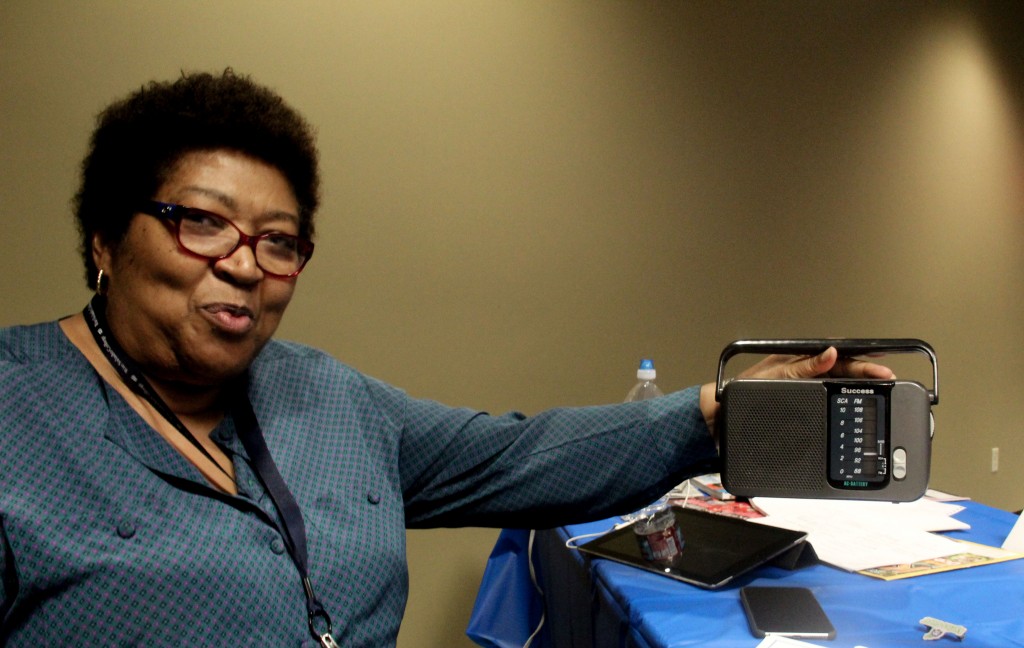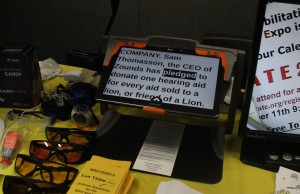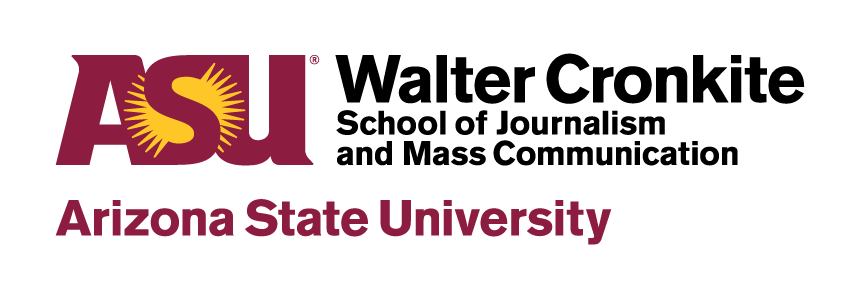
- Mares Wright displays one of the radios Sun Sounds of Arizona gives out, in addition to its online live stream of radio programming. (Lily Altavena)
by Lily Altavena
In 2015, non-profit Sun Sounds of Arizona is still giving out functional, 80s- looking radios to listeners after more than 30 years on the airwaves. Geared to help people with disabilities, volunteers from the organization read everything from the Wall Street Journal to Playboy aloud.
But the tide is changing at Sun Sounds, where an online stream is gaining in popularity.
“I’m signing up more and more people who want to do it digitally,” spokesman Mares Wright said.
Assistive technology is going digital and making new strides. Those with disabilities don’t have to look further than their smart phones to find a range of apps and accessories to improve quality of life. Some of this new technology was on display recently at “White Cane Day: A Resource Fair” in Tempe, Ariz., hosted by the city’s diversity office. The event was aimed at connecting those in the community who are blind or have visual impairments to a variety of resources, according to Michele Stokes, the city of Tempe’s Americans with Disabilities Act Compliance Specialist.

Mike Perry owns Low Vision Plus, which offers assistive devices for those with visual impairments. One of the vendors at the fair, he said he’s seen a lot of improvements in the past few years.
“The technology has just become so much better,” Perry said. “Now people can afford to get it, even if they don’t have a lot of money.”
He displayed an electronic magnifier called the Prodigi at his table, which connects to a tablet to magnify and read words aloud. Perry estimates the Prodigi costs around $2,700 – thousands of dollars less than what its lower tech, 1990s counterpart would have cost.
Virginia Thompson, the assistive technology coordinator with the Arizona Center for the Blind and Visually Impaired, said she sees more technology useful for people with more than one disability. A home alert system might include flashing lights, vibrations and braille, for example.
Smart phones, too, are ripe for development in assistive technology. In Lyrics Guru, a video game app showcased at the fair, users have to guess the correct lyrics for a song. The company, Al Jones Corporation, is currently developing a voice-controlled version of the game for those who are blind or have low vision.
“From our understanding, there are not many video games out there for those with visual challenges,” Al Jones, the company’s CEO, said.
Events like “White Cane Day” are critical to the communities they reach, Stokes said. Especially if someone is in the process of losing their sight, finding a new tool might make a huge impact in their life, he said.
For Thompson, updates in assistive technology signals more inclusion for those with disabilities.
“We still have a long ways to go, but at least now deaf-blind people can be active in the community,” she said.

